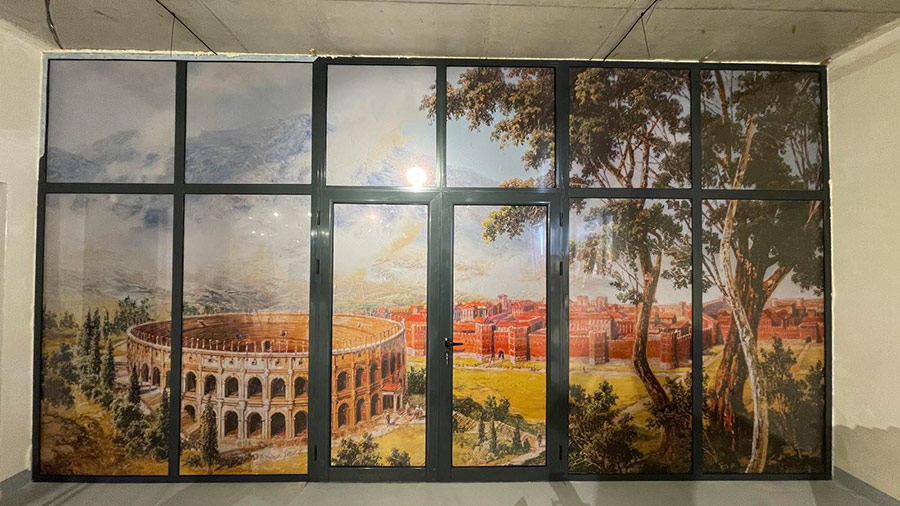Self-adhesive vinyl films


Self-adhesive vinyl films
Self-adhesive vinyl films are made from Polyvinyl Chloride (PVC). Commonly referred to as vinyls, these materials are known as PVC films in Bulgaria. They serve as surface materials for most printed advertisements and signs, displaying key messages, text, colors, or images.

Self-adhesive vinyls are structured from three main layers:
1. 1. Printable Layer: This is the top layer, usually made of vinyl that ranges in thickness from 50 to 90 microns (0.5 to 0.9 mm). The flexibility and surface suitability depend on this layer, which can be white, colored, transparent, matte, or glossy. Based on the characteristics of this layer, vinyls are categorized into several types, the most common being:
– Cast Vinyl: Highly flexible and ideal for surfaces with significant irregularities.
– Polymeric Vinyl: Offers high flexibility but is of a lower grade than cast vinyl. It is suitable for uneven car surfaces and outdoor showcases.
– Banner Vinyl: Designed for its flexibility, making it suitable for mounting on banners, tarpaulins, trampolines, and other flexible surfaces.
– Translucent Vinyl: Perfect for internally illuminated signs made of glass or acrylic.
– Transparent Vinyl: Available in colored or clear options with a UV stabilizer to ensure the transparency of the adhered surfaces. Suitable for illuminated signs, stained glass graphics, and tinting transparent materials such as glass, acrylic, and polycarbonate.
– Reflective Vinyl: Suitable for street signs, billboards, and application on specialized vehicles.
– Frosted Vinyl: Ideal for showcases, offices, and retail spaces, available in various colors. It tints and transmits light, creating a frosted effect on glass surfaces. It’s frequently used for computer-cut stickers indicating opening times.
– Floor Graphic Films: Suitable for outdoor and indoor applications. These are used for advertisements or messages on floor surfaces in public buildings, warehouses, sports halls, and other settings. They are distinguished by their strength, durability, and resistance to weather and mechanical wear.
– Monomeric Vinyl: With a layer thickness of 75 microns, it is suitable for nearly any flat surface.
– One-Way Vision Vinyl: Designed for application on windows and showcases, allowing visibility from one side while obscuring the view from the other. This structure and selection enable the effective use of self-adhesive vinyls for various applications.
2. The second layer of the material is the adhesive layer, which plays a crucial role in the installation process. Its characteristics, including the method of application and chemical composition, can influence factors such as mounting methods, strength, longevity, and compatibility with various surfaces. Depending on the strength of the adhesive layer, vinyl materials can be categorized into the following types:
– Permanent: After applying the film, it begins to bond within 20 minutes and reaches its maximum adhesive strength in 24 hours. Once this strength is achieved, removing the film becomes challenging without additional heat or adhesive removal chemicals.
– Removable: This type starts to bond in 40 minutes and achieves maximum strength in 30 to 40 hours. The film can be easily removed for up to about 2 years, depending on the surface material and environmental conditions.
– Easy Mount: This method of applying the adhesive layer is designed for easy air expulsion. A notable innovation in this area is capillary technology, which uses micro capillaries in the adhesive coating to allow air to escape without causing wrinkles in the vinyl.
– Easy-Adhesive with Adjustment: This adhesive application facilitates easy peeling and repositioning of the vinyl, making the application process simpler.
– Long-lasting Peelable: These films are designed for special surfaces, featuring superior adhesive strength among other properties.
The effectiveness of the adhesive layer is also influenced by environmental factors, particularly temperature. The vinyl should be applied to the media carrier within a temperature range of 10°C to 60°C. Additionally, the adhesive layer can vary in color to meet specific needs, with common colors being white, gray, black, and colorless. For certain applications, there are also easily peelable films that do not have an adhesive layer (Self Cling), which adhere to surfaces through static electricity. When removed, these films leave no adhesive residue behind.
3. The third layer of our film protects both the film itself and the adhesive. It is designed for easy peeling, allowing for straightforward handling during installation.
At Fresh Print, we specialize in high-quality large-format printing and plotter cutting of various types of vinyl for decorations, advertising, messaging, and instructions. Our graphics printed on self-adhesive vinyl are perfect for use in commercial establishments, public buildings, cinemas, theaters, concert halls, sports venues, and food establishments. These graphics can be applied to walls, floors, windows, showcases, vehicles, signs, public transport stops, railway stations, airports, and more.
We are here to help you choose the right material to meet your needs while providing the best price-to-quality ratio. You can supply your own artwork for printing, or our design team can assist in turning your ideas into print-ready graphics. With our extensive experience in advertising product design and printing, we understand all the nuances to help you achieve maximum impact at a reasonable price. We also offer installation assistance if needed.